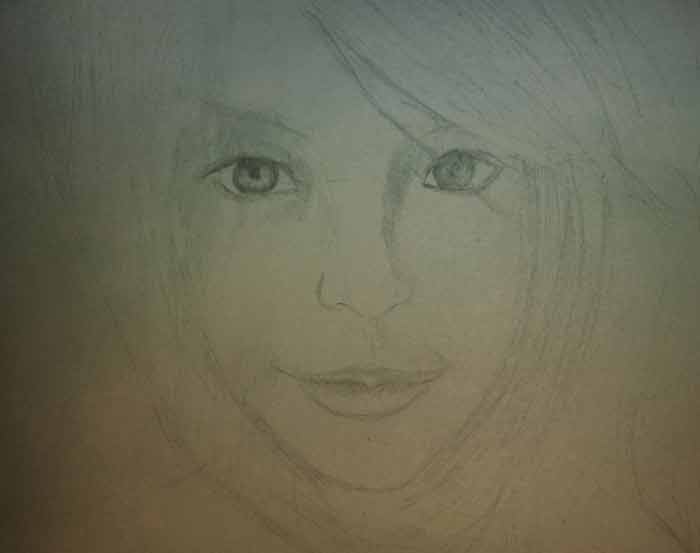Artwork from David, Drawing Academy student
Dear Vladimir and Natalie,
First of all, I would like to thank Drawing Academy for teaching me how to improve my artworks. Your lessons have taught me so much. Now what I need to do is work harder to reach my goals.
This is a drawing of my friend that I did when we were at a coffee shop. My goal was to capture the light in her face and her eyes, but I see a bunch of mistakes. Hair is my biggest problem. The amount of detail can be overwhelming to me; I guess cause I’m still an amateur. How can I render shade to the hair and face with over-rendering? And how to keep pencil lines smooth yet defined?
Drawing Academy Tutors
Hi David,
Many thanks for your drawing. we like it a lot, well done.
The portrait is quite laconic, yet portrays your friend’s personality and feelings. This is very good. Not every artist is able to achieve it in a sketch.
There are few things you may want to consider next time you draw a portrait.
For example, you want to double-check the face proportions, like the distance between eyes, and the distance between the base of the nose and the upper lip. It might be a tiny bit smaller than in your drawing.
Regarding details, sometimes you don’t need to go for a hyper-realistic depiction of all nuances you can spot. In many cases, less is more.
For a short (under an hour) portrait, you may want to set other tasks instead of going for details or perfect rendering of tonal values. Go for such tasks as portraying correct head and face proportions, try to capture model’s emotions, try to improve long continuous strokes and outlines, etc.
When you do longer portraits (more than 2 hours), in addition to previously mentioned tasks, practice tonal rendering in layers.
Always keep your pencil well-sharpened. Do not be afraid of individual pencil strokes even in smooth areas like cheeks, for example. Your pencil marks are your hand-signature. Do it with confidence and style.
When rendering hairs, remember that a hairstyle is one big mass with its own volume and shape. Treat it as a solid three-dimensional object, which has its own light and shade areas. Apply pencil strokes along hairs; this will help to depict hair texture.
We hope this helps.
![]() Kind regards,
Kind regards,
Natalie Richy and Vladimir London
Drawing Academy tutors
Enroll in the Drawing Academy Course
Pay once - Enjoy forever!
Only $297






